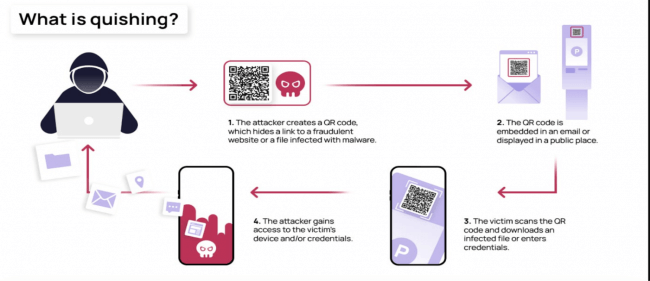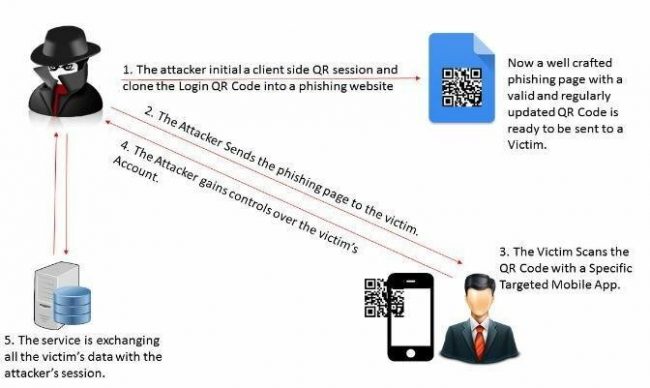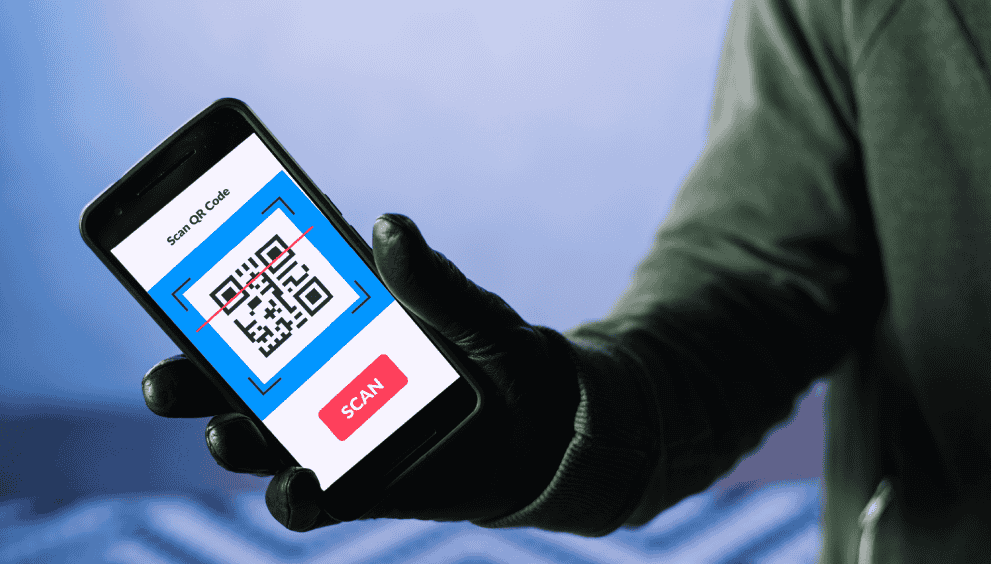QR codes are widely used by businesses and small-scale organizations for payments, guiding users to their websites or menu cards, etc. Based on the increasing popularity of QR codes, one of the recent observations has been the ingenious phishing methodology named QR code phishing or QR phishing. It is a cybersecurity fraud that exploits the widespread use of QR (Quick Response) codes in phishing attacks.

Fraudsters typically send malicious QR codes via text messages, social media apps, or even via email, probing people to scan them. These online scams in cyber security manipulate victims into making payments and even instruct them on how to withdraw funds from their bank accounts.
Once this phishing QR code is scanned, victims are directed to a fake website that appears legitimate. On this fake website, they are prompted to provide personal and confidential information, including login credentials, personal data, or financial details.
In some cases, QR code phishing attacks result in the download of malware, infecting and compromising the user’s device. To avoid detection by security products, some bad actors generate QR code spoofing images on the same day they are sent, reducing the chances of them being blocked by a security blocklist due to prior reports.

Safeguarding against QR Phishing
- Increasing User Awareness: It is essential to inform users about the risks of QR code phishing. Users need to exercise caution when scanning QR codes from unfamiliar or untrustworthy sources.
- Secure QR Code Generation: Generating QR codes securely and making them tamper-proof is crucial for organizations to avoid being involved in cyber fraud news.
- Verification of URLs: Always check the URL after scanning a QR code to ensure it matches the intended destination.
- Advanced QR Code Scanners: Certain apps that use secure QR code scanners with advanced security features can flag suspicious URLs that may pose a potential threat of QR code phishing attacks.
- Implementing Multi-Factor Authentication (MFA): Adding a layer of security, especially for platforms that are frequently targeted by cyber security fraud, can be beneficial.
- Consistent Monitoring: Companies should consistently monitor their QR code campaigns to detect any signs of tampering or misuse, thus preventing phishing QR code incidents.
- Exercise caution when sharing information after scanning a QR code: Always double-check the logo and full URL of the page before providing sensitive information.
For enhanced security, manually entering the original URL into your browser is highly recommended instead of using links from a QR phishing code.
Stay Scam-Smart and Secure!
Fraudsters may be clever, but with the right awareness, you’re always a step ahead. Follow these tips to secure your info and keep the scammers in check. Stay alert, stay safe, and keep your personal and financial details locked down!
